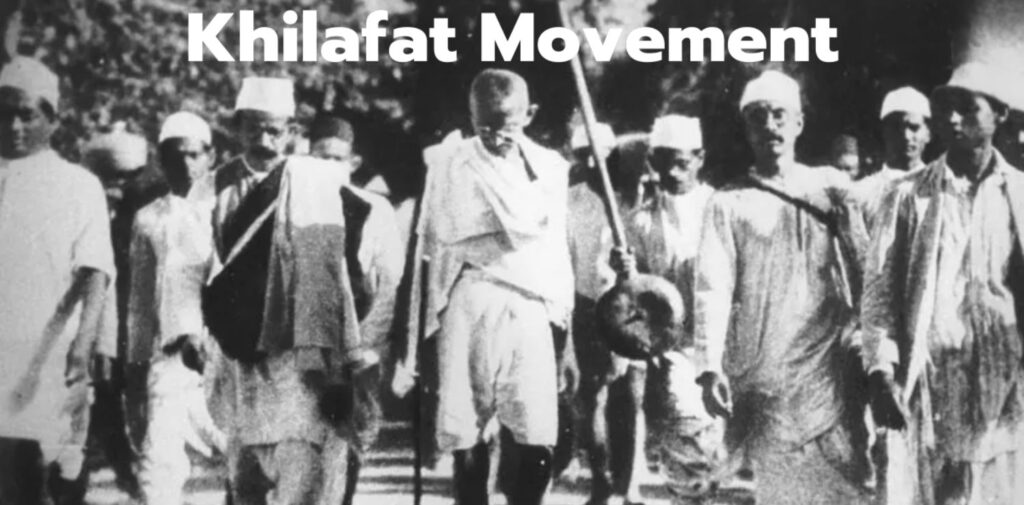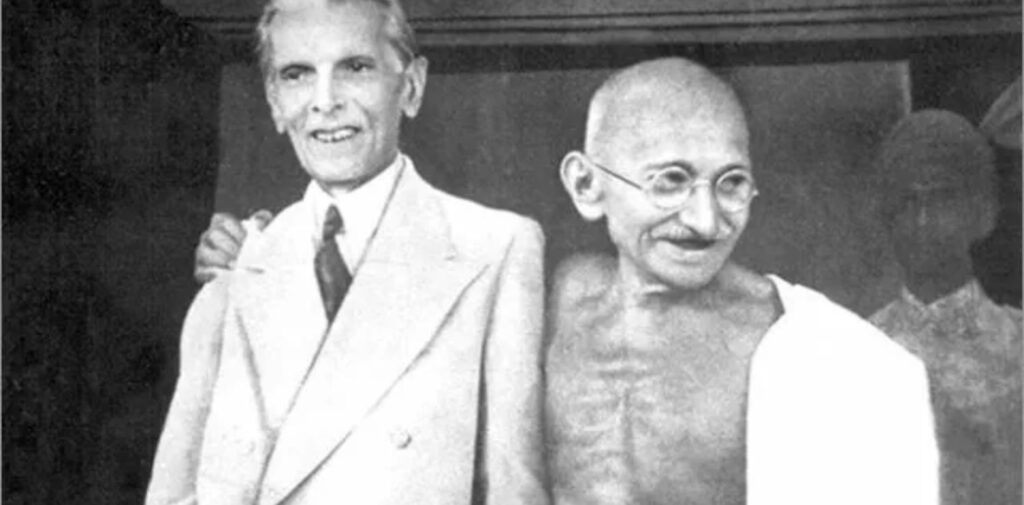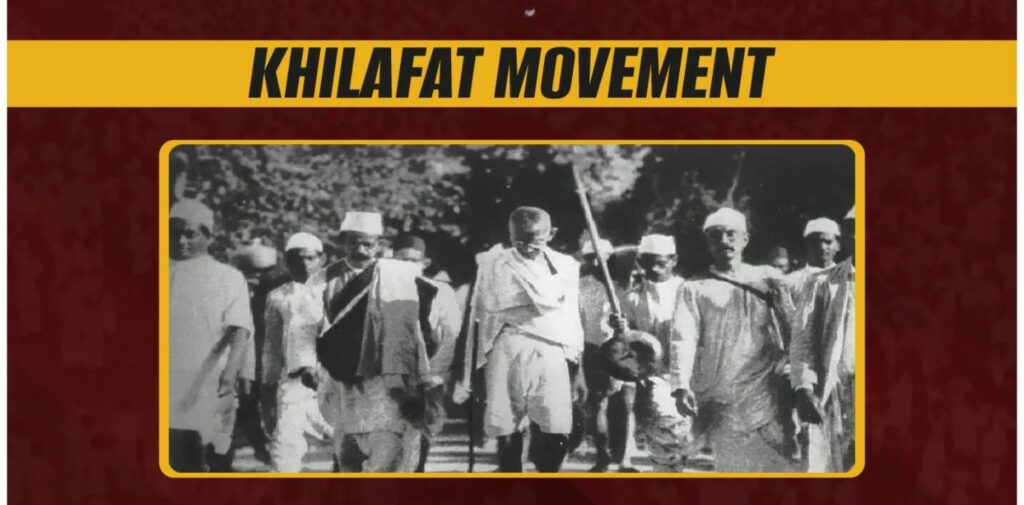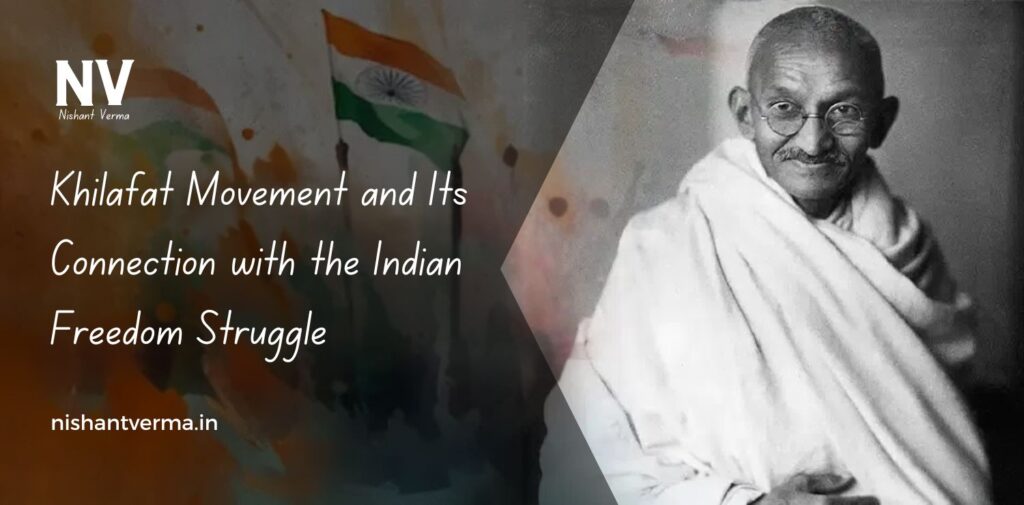India’s fight for independence from British rule is a story of courage, unity, and determination. Among the many movements that played a significant role in this struggle, the Khilafat Movement is one of the most important but often overlooked chapters. The Khilafat Movement was not just about a religious cause; it brought together people from different parts of India, from different religions, and from different walks of life to unite against British colonial rule. Let’s explore the Role of the Khilafat Movement in strengthening Indian unity and boosting the national freedom struggle.
What Was the Khilafat Movement?
The Khilafat Movement started in the early 20th century when the Ottoman Empire, which was a Muslim-majority empire, was defeated in World War I. The British, who were on the winning side, took advantage of this situation and decided to dismantle the Ottoman Empire. This worried many Muslims around the world because the Ottoman Sultan was considered the spiritual leader of all Muslims. He was called the “Khalifa,” meaning the leader of Muslims. When the British decided to weaken the Sultan’s power, many Muslims felt that Khalifa’s position should be protected, and they needed to stand up for him.
In India, Muslim leaders, including Maulana Mohammad Ali and Maulana Shaukat Ali, decided to start a movement to protect the Khalifa’s position and oppose the British actions. This movement became known as the Khilafat Movement.

Khilafat Movement and Its Connection with the Indian Freedom Struggle
Although the Khilafat Movement started as a religious cause to protect the Ottoman Sultan, it soon became an important part of India’s struggle for freedom from British rule. The leaders of the Khilafat Movement understood that the British were not just harming the Sultan, but were also oppressing the Indian people. So, they made a wise decision to connect their movement with the broader Indian independence struggle.
A Unified Protest Against British Rule
The Khilafat leaders knew that to fight against the British, they needed to build a strong alliance with the Indian National Congress (INC), the main political party fighting for Indian independence. In 1919, the Khilafat leaders joined hands with Mahatma Gandhi, who was leading the Non-Cooperation Movement. Gandhi’s idea was to peacefully protest against British rule by not cooperating with the British government and their institutions.
Gandhi saw the Khilafat Movement as an opportunity to unite Indians against British oppression. He supported the Khilafat cause and urged Hindus and Muslims to come together in their shared fight for freedom. The unity between the two communities was essential for the success of the Indian independence movement, and the Khilafat Movement played a key role in fostering this unity.
Hindus and Muslims Coming Together
Before the Khilafat Movement, Hindus and Muslims in India were often divided along religious lines. There were differences and even conflicts between the two communities. However, the Khilafat Movement helped bridge this gap and brought them together for a common cause: to fight against British colonialism.
Muslim leaders like the Ali brothers (Maulana Mohammad Ali and Maulana Shaukat Ali) and other Khilafat supporters actively worked with leaders of the Congress Party, like Mahatma Gandhi, Jawaharlal Nehru, and Sardar Vallabhbhai Patel. This joint effort made both Hindus and Muslims realize that their common enemy was the British and that they needed to work together to achieve freedom.

The Role of Mahatma Gandhi in the Khilafat Movement
Mahatma Gandhi was a key figure in the success of the Khilafat Movement. Even though the movement was initially a religious cause, Gandhi saw its potential to unite people for the larger goal of Indian independence. He recognized that Muslims’ anger over the British actions against the Ottoman Sultan could be used to rally people against the British in India.
Gandhi supported the Khilafat leaders by urging Indians to participate in non-violent protests. He called for a boycott of British goods, schools, courts, and even the British government. This was known as the Non-Cooperation Movement, and it became a mass movement that brought millions of Indians together to oppose British rule.
The Role of Women in the Khilafat Movement
The Khilafat Movement was not just limited to men. Women in India also played a crucial role in the movement. Women were encouraged to participate in protests, boycotts, and other forms of resistance. Leaders like Sarojini Naidu and Kamaladevi Chattopadhyay worked alongside male leaders in the movement.
Women organized meetings, held rallies, and spoke out against British rule. They also played an important role in boycotting foreign goods, which was a significant part of the Non-Cooperation Movement. The involvement of women in the Khilafat Movement showed that the struggle for independence was not just a man’s fight, but a fight that involved everyone.
The Impact of the Khilafat Movement
The Khilafat Movement had a lasting impact on Indian politics and society. First and foremost, it helped unite Hindus and Muslims in the fight for independence. The movement showed that both communities could work together for a common cause, which was a powerful message for the future of India.
Secondly, the Khilafat Movement helped spread awareness about the oppression of the British. Through boycotts, protests, and other forms of resistance, Indians began to realize the power of non-violent protest. Gandhi’s philosophy of non-violence, or Ahimsa, became a central part of the Indian independence movement.
Finally, the Khilafat Movement also brought attention to the importance of cultural and economic independence. The boycott of British goods encouraged Indians to use homegrown products, which boosted the local economy and promoted a sense of pride in Indian craftsmanship.

Challenges and Decline of the Khilafat Movement
Despite its success, the Khilafat Movement began to lose momentum after a few years. The reasons for its decline are complicated. One important reason was the changing political situation. After World War I, the British government became more oppressive, and the global situation also changed. The Ottoman Empire was finally dissolved, and the Sultan’s position as Khalifa was abolished. As the Khilafat cause lost its relevance, many Muslim leaders turned their attention to other issues.
Another reason for the decline was the increasing internal divisions between Hindus and Muslims. While the Khilafat Movement had succeeded in bringing both communities together, the unity was fragile. After the end of the movement, tensions between the two communities began to rise again, and this ultimately led to the division of India into two countries—India and Pakistan—in 1947.
Conclusion: The Legacy & Role of the Khilafat Movement
The Khilafat Movement was a crucial chapter in India’s fight for independence. It played a key role in uniting Hindus and Muslims and showed that unity in diversity could be a powerful tool for resistance against colonial rule. Even though the movement eventually declined, its impact on the Indian freedom struggle was immense.
The Khilafat Movement also demonstrated the power of peaceful protests and non-cooperation. Gandhi’s leadership in the movement paved the way for future struggles, where non-violent methods became central to India’s fight for freedom.
In the end, the Khilafat Movement is remembered not just as a movement to protect a religious cause, but as a symbol of how people from different backgrounds can come together to fight for a common goal. The unity it created between Hindus and Muslims during the movement left a lasting legacy in India’s journey toward independence.




